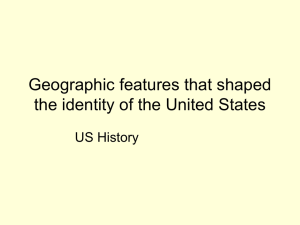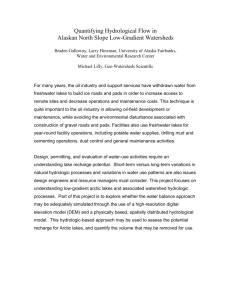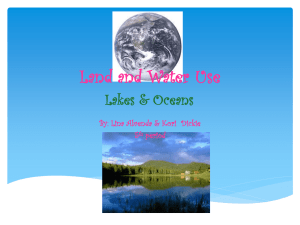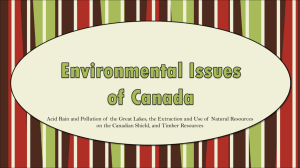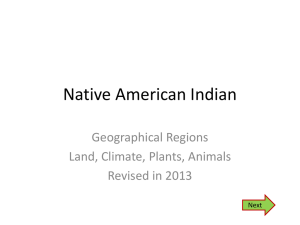Landforms
advertisement
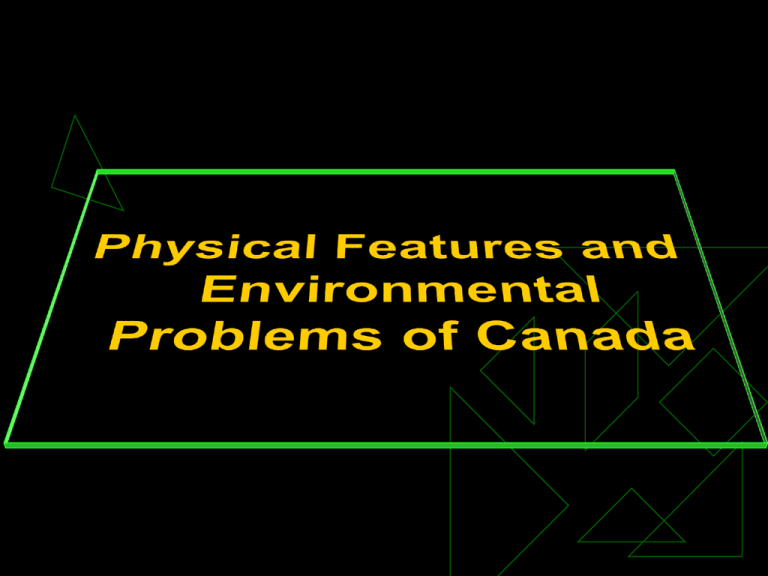
The Rocky Mountains The Rocky Mountains are the largest mountain system in North America. Extends 3,000 miles along the western part of Canada The Canadian Shield Horseshoe shaped area surrounding the Hudson Bay Canadian Shield Made up of: Rocky Hills Lakes Evergreen Forests Poor It Soil and Cold Climate contains many mineral deposits Iron Ore Copper Nickel Canadian Lowlands Canada’s smallest land region. This region is Canada’s manufacturing center. Region produces 1/3rd of the country’s crops. FERTILE SOIL!!!! Home to more than half of Canada’s population. WHY??? Major Bodies of Water Bodies of water can be used for : Transportation Recreation Industry Many cities developed near these bodies of water. This means that they are…… NAVIGABLE Toronto Ottawa Vancouver Quebec City Montreal Edmonton The Great Lakes world’s largest group of freshwater lakes. The Share a border with Canada & the United States An easy way to remember them… HOMES Huron Ontario Michigan Erie Superior The Great Lakes The Mighty Rivers Canada has two major rivers: The Mackenzie River The country’s longest river forms in the Rockies and flows north into the Arctic Ocean. Called the “Mother of Canada” The St. Lawrence River Connects the Great Lakes to the Atlantic Ocean. One of North America’s most important transportation routes. The St. Lawrence Seaway Completed in 1959 It’s a system of locks, canals, and dams to allow ships to move from one water level to another. The seaway makes trade between Canada and USA easier. Partners and Friends: The USA and Canada Today What environmental concerns do Canada and the USA share today? What economic ties do the USA and Canada have to each other? Environmental Issues The USA and Canada share: The coasts of the Atlantic and Pacific Oceans. The Great Lakes The Rocky Mountains What environmental problems do you think could happen in these areas? Water Problems People in Canada & the U.S. depend on the water from the Great Lakes Use the water to drink Use it in their factories Use it for transportation In the 1970’s water pollution became a serious problem. Factories were using the lakes as a dumping ground for waste Solutions: Reduce the # of pesticides Reduce the amount of human waste dumped into the lakes Improving Air Quality Acid Rain: when pollutants are put into the air, they mix with the water molecules and turn the water acidic Causes: factories, cars, coal burning power plants Acid Rain causes many problems: Kills plants Damages or kills trees Pollutes lakes and rivers Kills fish Solutions Build factories that do not pollute the air Cars have to make less pollution Encourage walking, riding bikes, taking the bus or carpooling Create agreements with the U.S. Most of the acid rain comes from the U.S. due to wind patterns The Timber Industry Forests cover almost half of the land in Canada Clear-cutting: cutting down all the trees in a given area, leaving gaps in the forest Issue with this practice include: Reduced water quality Erosion Loss of wildlife habitat The government & logging industry spend money to protect the forests


